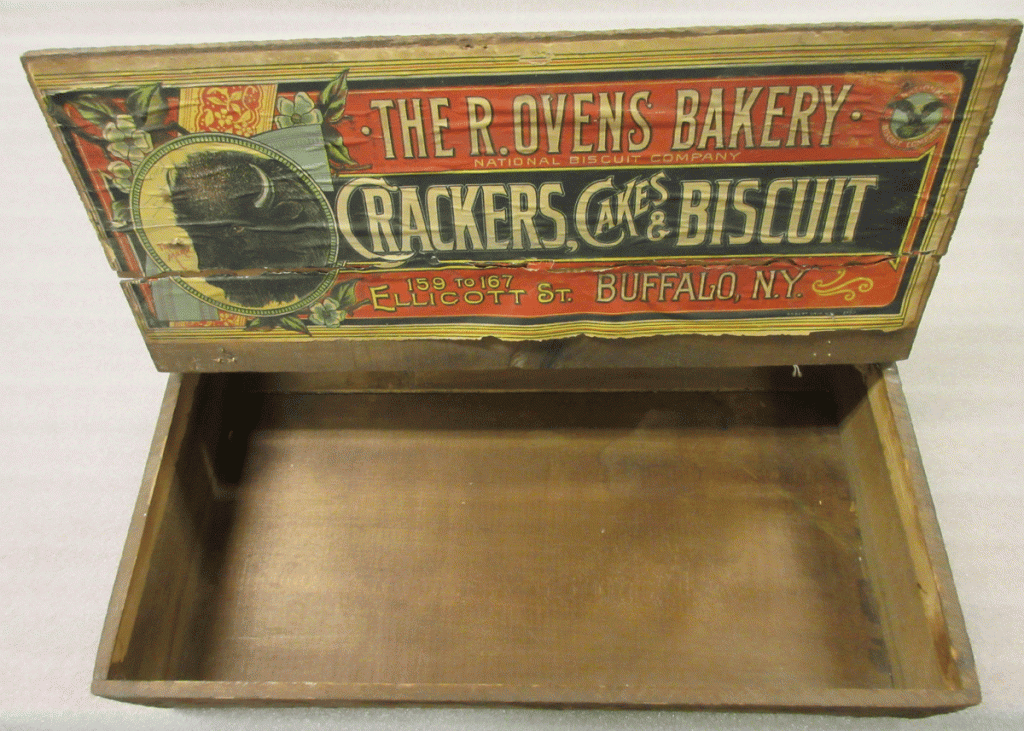As the Park City Museum is currently hosting The Bison: American Icon exhibit, this week’s Way We Were focuses on one of the few objects in our collection to feature the image of a bison. It is a wooden shipping crate from the R. Ovens Bakery in Buffalo, NY. It once contained some variety of crackers, cakes and biscuits. The lid of the box is addressed to “Ann (?) Taylor, Caneadea, NY.” The inside of the lid is covered with a colorful paper label that prominently features the head of a buffalo on the viewer’s left-hand side.
The R. Ovens Bakery was located at 159-167 Ellicott Street in Buffalo, NY. The company took advantage of its hometown’s name by using the image of a buffalo head as its logo, thus connecting the bakery to its location as well as its status as an all-American company. The R. Ovens Bakery was, in fact, a division of the United States Baking Company. In 1898, the same year as Park City’s Great Fire, the U.S. Baking Company merged with the American Biscuit and Manufacturing Company and the New York Biscuit Company to form the National Biscuit Company, now known as Nabisco. With the merger, 114 small bakeries came together to form a company that monopolized the U. S. cookie and cracker manufacturing business.

Credit: Park City Historical Society & Museum, Smith & Brim Collection
So how did the crate get from New York to Utah? We may never know for sure, but this object was part of a collection of items that were originally found inside 515 Main Street, which was once the Smith and Brim Store and later, the Star Meat and Grocery. It is possible the baked goods were sold at one of these stores. Such groceries on Main Street certainly would have sold similar products. The label on the R. Ovens Bakery crate indicates that the company was already owned by the National Biscuit Company at the time of production, so it most likely dates to after the 1898 merger. This also aligns with the time period that George Smith operated first the Smith Store, and then Smith and Brim. It was renamed Star Meat and Grocery when George Hoover purchased the store in 1920.
The Bison: American Icon examines the “how” and “why” of the dramatic decline, and then the gradual rise again, of the bison in the American West. The bison is an icon of America, symbolizing power, wildness and freedom; ironically, Euro-Americans only began viewing the animal in this way as the species neared extinction and after the Wild West had already been tamed. Nevertheless, nostalgia is a powerful motivator, and the bison was, and still is, used in advertising throughout the United States in order to convey a strong sense of national identity.
The Park City Historical Society & Museum is celebrating 30 years of preserving, protecting, and promoting Park City’s history and heritage.